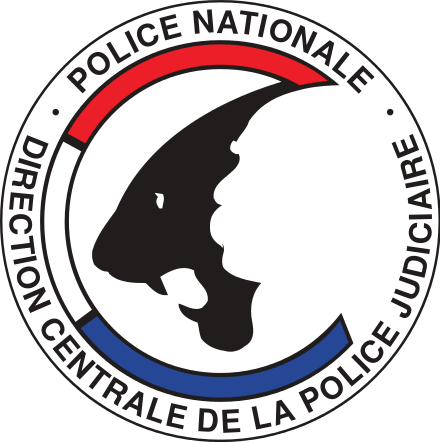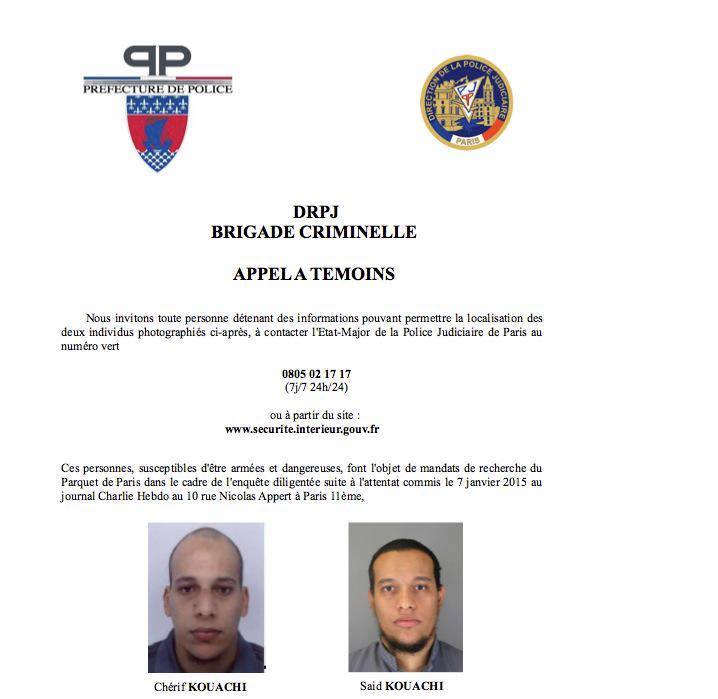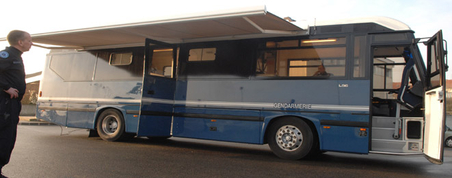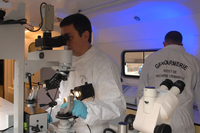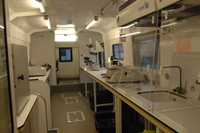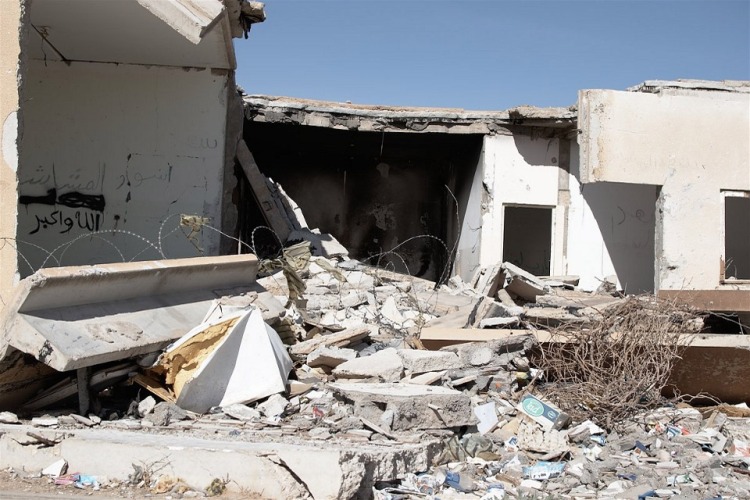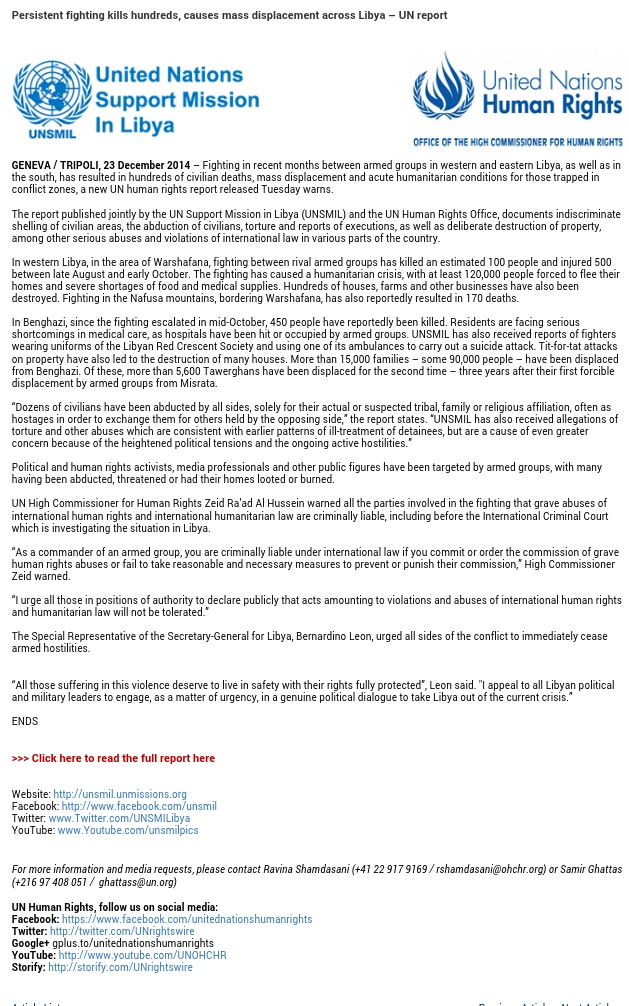A forgotten victim of the recent atrocities in France was a man who devoted his life to law enforcement and the pursuit of justice. Whether he ended his life by his own hand as a tragic consequence of depression that can be attributed to unknown circumstances does not take away the years of dedicated service to his country and the contributions which he made to the endeavor of a just society. The facts and circumstances surrounding his death are worthy of critical examination in hopes of preventing future losses.
LIMOGES-FRANCE
Helric Fredou was a veteran officer (OCJ) of the Judicial Police a component of France’s National Police since 1997. His untimely demise was January 8, 2015 recorded as approximately 0100 hours Thursday morning. It remains unclear as to the time his lifeless body was first discovered, what has been revealed through public sources is his next of kin was first notified at around 0500 hours.
Assuming this notification was done in a timely manner consistent with standard investigative protocols when a fellow officer has fallen, this would place the discovery within one hour or 0400 hours.
According to subsequent interviews Commissioner Fredou recieved a telephone call at his domicile wherupon he left soon therafter, arriving at his office around 11:25 on the evening of the massacre. (Wednesday 7, January) At that time there was mobilized over 88,000 law enforcement and soldiers involved in a nation wide man-hunt for two very dangerous armed killers. After meeting with his team and receiving the latest updates on progress he entered his office purportedly to begin a report.
Although unspecified in news accounts we may assume that a law enforcement professional (colleague) first entered the crime scene. France is a country reknown for criminalistic skills and the National Police are among the worlds finest. For that reason it is unlikely that anyone would have processed the crime scene with a predetermined assumption. Commissioner Fredou was clearly dead with no reason to apply first-aid and no reason to summon a medical ambulance. Also there would be no reason to investigate with any dileniation from a homicide at that point.
The reconstructed time frame would indicate that forensic photography probably would have started their time consuming duties after arrival and set-up no earlier than 0500 hours. Forensic photography has come along ways since a French investigator by the name of Bertillion first pioneered it. It is a rigid scientific discipline requiring years of study. Keep in mind that at this point the investigation is identical to that of a homicide. A National Police Commissioner found dead while armed killers are on the loose! In addition to hundreds of photographs the bullet which passed through his skull would have to be found and tested to determine whether in fact it was discharged from the Sig-Sauer service weapon found near Helrics body. It is likely to have taken hours to complete the processing of the crime scene. While that was happening investigators were dispatched to the Commissioners domicile to obtain his personal computer, cell-phone and other items to aid in the investigation. Because of the nature of the death from apparent gun-shot wound to the cranium entrance forehead, the deceadants hands would be tied off in air tight bags to preserve possible gunshot residues before placement in a body bag and ready for transport to a facility where the autopsy could be performed. Reconstructed time frame would be around 0800 transport time. Assuming that a full forensic autopsy would be performed and toxicology tests done to determine whether chemical substances played a role or whether Commissioner Fredou had any physical ailments causing severe pain as a possible contributing factor, quite possibly 6 hours, which would bring us to 1600 hours. The determination of suicide is made by analysis from a combination of autopsy findings and investigative evidence.
The first public television news broadcast of Commissioner Fredous announced suicide was at 11:24; a subsequent public notification was made at 12:09 in a regional newspaper. Helrics next of kin were not allowed to view his body until late afternoon. The decision to rubberstamp suicide as cause of death whether than wait for completion of the process is apparent. One regional newspaper alluded to a previous suicide in Nov. 2013 that the Commissioner himself had discovered of a colleague in an apparent attempt to show a corollary or maybe as if suicide is an infection. The same newspaper reported that Helric was depressed and burned out evidenced by the fact that his superiors had requested that he turn in his service hand-gun. Also reported on various sites was that Helric was in charge of the Hebdo investigation. The command and control of French law enforcement is complex with overlapping jurisdictional authorities, the Gendarmerie falls under direct control of the Interior Minister although still retaining its designation as a military force structure. Within that Group there is RAID, and Paris Perfecture also is under direct control of the Interior Ministry so clearly Helric was not in overall command of the nationwide investigation. Perhaps there was a turf war which would explain the friction that was reported concerning the telephone call Fredou answered on that fateful night. Helric was well aquainted with the Interior Minister who is also mayor of Cherbourg where Helric was posted during his career. (2010-2012)
The statement released to the press of Fredous death would have to have been approved from the Office of the Interior Ministry. The investigative officers and pathologist would have been informed publicly that the state viewed the death as a suicide, rendering the investigation as open to criticism concerning a predetermined finding.
In the morning of 8 January 2015 around 0800 hours, yet another French police officer was killed. Clarissa Jean-Philippe age 26 was gunned down in Montrouge, a suburb just two and a half miles from downtown Paris, while on call to a vehicular accident. Information and details were still incoming at 11:24 the time Fredous death was announced. For its part mainstream news failed to render any accounts of the Commissioners death until days later when it emerged. The press conferences (2) held by the Interior Minister Bernard Cazeneuve, on 8, January did not make mention of Helrics name or fate.
Perhaps it is the open and shut manner of this investigation which has helped give rise to charges of governmental complicity from Jean-Marie Le Pen who in an interview suggested that the Hebdo murders bore the signature of the secret services. While dismissed by poliical opponents with the typical conspiracy theory label, state interests are clearly being advanced from the crisis. Within days Jews were being asked to resettle in occupied Palestine as a continuation of The One Million Plan, indeed 10,000 French citizens are expected to heed this call in 2015 as France is being portrayed as a hostile and dangerous enviroment for those of the Jewish faith. Those in France who look upon the cartoon charactarization depicted in the Hebdo magazine of the Prophet Mohammed (PBUH) as neither praisworthy nor commendable are being marginalized and their patriotism questioned. Being anti-Islam is now politically correct in France as well as the western world. The reality of current documented events and the aftermath had they been foretold also could easily have been dismissed as conspiracy theories and ignored; and were.
The government of France policy of arming a fantasy group of insurgents who will topple the Syrian government and bring a land flowing with milk and honey is itself a ridiculous and absurd conspiracy theory, based on wishful thinking and a strong dose of delusion. A reality check might include the current state of affairs in Libya and Iraq.
For years Syrian President Bashar al-Assad and members of his secular government have been warning the western world of the dangers of fueling the takfiri extremists in their quest to reestablish colonial control over the ME. These warnings and appeals to the West to abide by international law were and are ignored. Rather than restrict and impede the flow of French radicalized extremists, the French government supports them. This newly created narrative of free speech being the cause of consequences from years of failed policy is being used and exploited for short sighted political gain and obsfusication purposes. It certainly is not a conspiracy theory at all that French secret services have combined to arm those whom the French government now claim to fight. The strategy by the west of igniting sectarian war in Syria has failed, the people of Syria see themselves first as Syrian whether Moslem Sunni, Shia or Orthodox Christian thereby setting an example to France on how to peacefully coexist.
In conclusion it should be noted that the two Couachi brothers had lived for years in the Limoges area which was within Commissioner Fredous jurisdiction and that they had been placed under watch which also would have been known to Helric.
Although the official story suggests that the authorities lost track of the now dead brothers maybe there was evidence to show that there was still current info in their files which showed otherwise. As far as the report which Fredou was preparing, it disappeared and there was no suicide note.
Even now because of a clamp down on information about Fredous’ death in France most of those protesting for free speech dont realize the censorship imposed on them by those who march under it’s banner.
The Fredou Affair calls into question the duplicitous and schitzophrenic nature of Western nations foreign policies viz a vis the Middle East. Conflicts of interest and turf wars are the result. Domestic law enforcement agencies are increasingly being throttled and impeded by their own nations secret services who maintain a supportive role of radical extremists who are viewed and used as useful idiots. Had the Couachi brothers caused murder and mayhem in Syria, it is likely the western press would have presented them as rebels and their acts as strikes thus sanctioning what they condemn within their own borders.
www.enfsi.eu/member/forensic-sciences-institute-french-gendamerie-fsifg-rosny-sous-bois-france
France
Forensic Sciences Institute of the French Gendamerie (FSIFG), Rosny Sous Bois, France
Name of institute (national language)
Institut de Recherche Criminelle de la Gendarmerie Nationale (IRCGN)
Name of institute (English language)
Forensic Sciences Institute of the French Gendamerie (FSIFG)
Website
http://www.gendarmerie.interieur.gouv.fr/
Director
Colonel François DAOUST (sincejune 1st, 2009)
ENFSI’s permanent representative
Colonel François DAOUST (since june 1st, 2009)
E-mail
francois.daoust@gendarmerie.interieur.gouv.fr
Address
1 boulevard Théophile
93111 Cedex
Rosny Sous Bois
France
T:
+33 (0)1 58 66 50 20
F:
+33 (0)1 58 66 50 27
Characteristics
Founded in 1987
National scientific agency under the administrative supervision of the General, head of the French Gendarmerie
Accreditation since 2007 based on NF EN ISO/CEI 17025
ENFSI member since 1992 (founding member)
Managerial data (2010)
Total staff: 250 full time equivalents (fte)
Reporting forensic experts: 150
Support budget: 4,5 million €
Investment Budget: 600.000 €
Case load :
119777 cases
129.674 exhibits/items examined
66.97797.502 expert reports
Case load :
119777 cases
129.674 exhibits/items examined
66.97797.502 expert reports
Fields of expertise
IRCGN offers a unique scope of expertise in forensic sciences. It is organized as follows:
One division for administrative and logistic support
Three forensic divisions each divided in four units:
Physics and chemistry:
ballistics, toxicology, micro-analysis, arsons, environnement and explosives
Engineering and digital:
signals, computers, vehicles, documents
Human identification:
fingerprints, biology, entomology, anthropology-thanatology-odontology
Biologic samples preservation service
Mass genetic analysis service
Two operational units
Disaster victims identification unit
National criminal investigation unit
Lab’Unic, the laboratory on wheels IRCGN
With its mobile laboratory, the Criminal Research Institute of the National Gendarmerie (IRCGN) has a projectable analysis tool on the whole territory.
This bus consists of a laboratory (2/3) and a command post (1/3). The “laboratory” allows, thanks to the carried materials (cabinet cyanoacrylate macroscoque comparison, ultraviolet spectrometer, infrared spectrometer, an ion scan, etc.), analyze directly on crime scenes or serious offenses collected clues by soldiers of the gendarmerie.
This mobile unit of analysis is in service since the beginning of this year.
Sources: SIRPA gendarmerie
Credits Photo: Police SIRPA
Contact: SIRPA Gendarmerie

